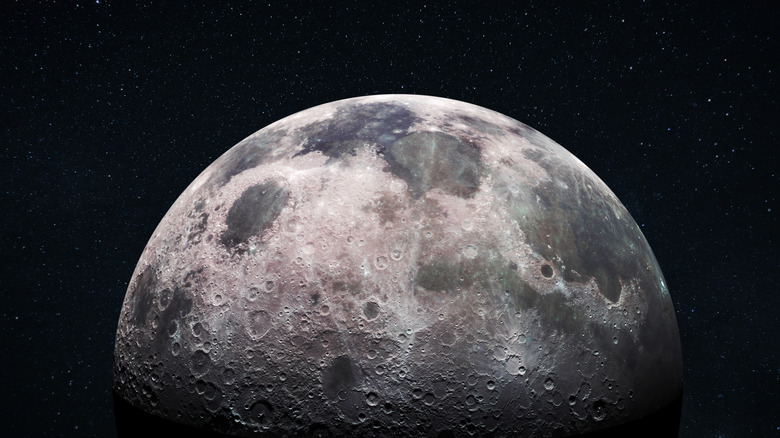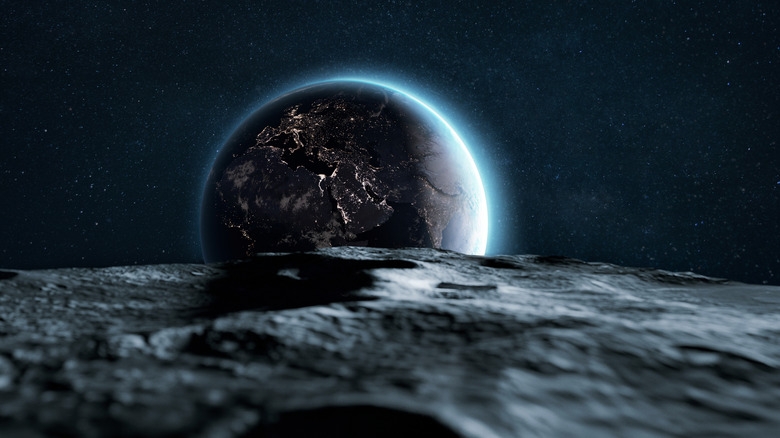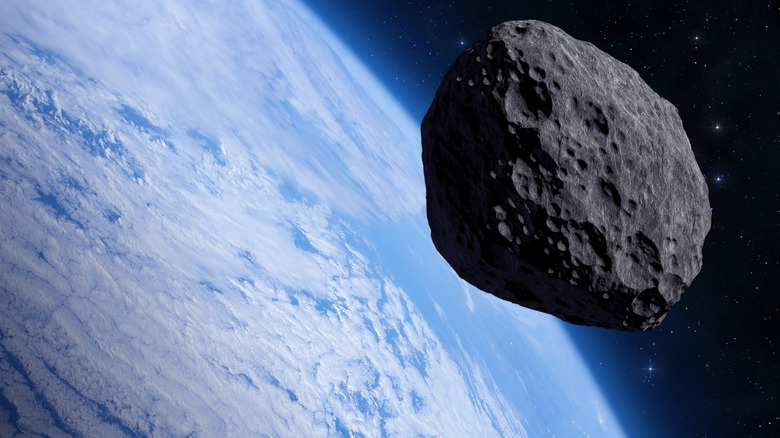Earth Doesn't Really Have Two Moons Until 2083, But It Does Have A Longterm Visitor In Orbit
Some planets in our solar system have an incredible amount of moons. Jupiter has 95, with names like Ganymede and Europa. Remarkably, though, Saturn has almost three times that number, including the fast-moving Titan, with a total of 274. By contrast, our beloved Earth has just the one Moon. However, astronomers have discovered a celestial body that is expected to be circling near us for the next several decades. The temporary guest is an asteroid known as 2025 PN7, and it was found by astronomers at the University of Hawaii in August 2025.
It's believed that this new visitor measures only about 118 feet across. (In comparison, the Moon has a radius of about 1,080 miles.) The two celestial objects differ dramatically in terms of size and have very different relationships with Earth. The Moon has been orbiting the planet for billions of years, while 2025 PN7 had been in what's called a quasi-orbit of the planet for approximately 60 years at the time of its discovery. The asteroid is not a true moon, as it isn't in a permanent orbit around the planet. Instead, it's called a quasi-satellite. Here's what that means, how long our new friend will be on its extended visit, and why it hasn't come to stay.
2025 PN7 is a quasi-satellite, not a true moon
For a lot of us, a satellite is primarily something that allows us to access our TV channels and keep our Google Maps software working as it should. A natural satellite, however, is a non-artificial body that orbits a larger one. The Moon is kept in orbit with Earth by the planet's gravity and its movement, and it orbits the Sun as it orbits Earth. This doesn't happen with all objects that get close to Earth, however. Sometimes, a planet will exert some influence on a celestial body but this won't be enough (relative to its size) to maintain it into constant orbit.
This is why 2025 PN7 isn't a true moon. The Moon orbits the Earth and the Sun, while the asteroid is simply orbiting the Sun. It has passed close to our planet and is following a similar path which makes it appear to be orbiting Earth, but it isn't really. In fact, it will move away eventually.
Another crucial thing to note is that, though the asteroid is the most recently discovered temporary satellite of the Earth, it isn't the only one. It's one of seven different quasi-moons known to be in the vicinity of the planet. This doesn't mean, though, that they're the only ones out there. The massive scale of space, even relatively close to our planet, means that certain objects can easily evade detection — just as this latest quasi-moon is believed to have done for decades. Even the largest black hole ever discovered remained hidden for a long time.
When astronomers believe 2025 PN7 will leave us
It's estimated that the asteroid has been in close proximity to the Earth for about 60 years, and 2025 PN7 is expected to depart in approximately 2083. As astrophysicist Jonathan Blazek explained to Northeastern Global News, "in the long term, the orbits will drift, and the quasi-moons will move away." This celestial body is simply not large enough to have any sort of real influence on Earth's gravity as the Moon does, Blazek said, as it is about a quadrillion times smaller than the Moon. That means it won't have any particular impact on the planet's progress through space, or our day-to-day lives.
By contrast, the Moon is very essential to life on Earth. Without it, the seasons and tides would drastically change, causing extreme weather conditions and even potential new ice ages. We can be thankful that 2025 PN7 is small enough that it will not pose any threat to our planet. Still, it can help us gain a better understanding of our surroundings. After all, learning more about how the objects near us move can help keep us safe from any future catastrophic collisions.


